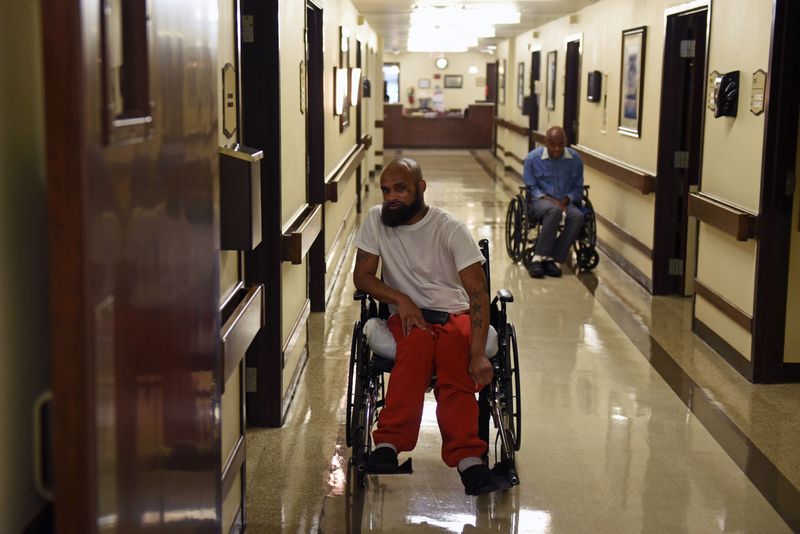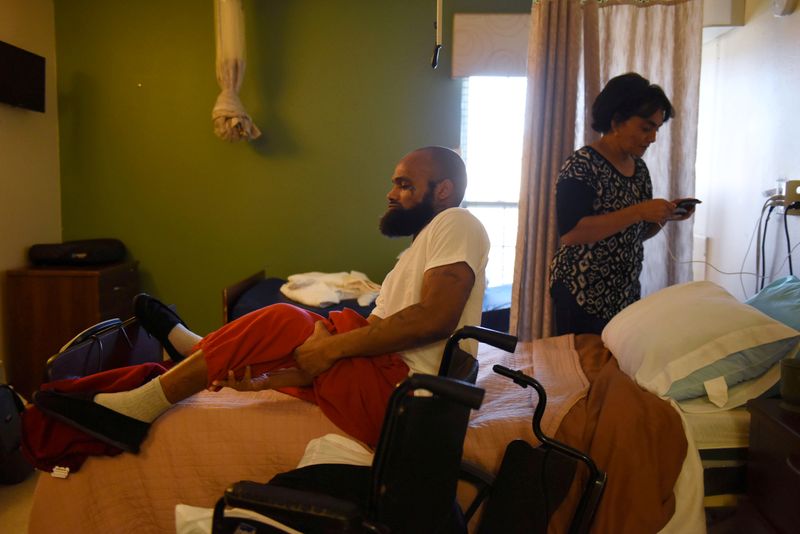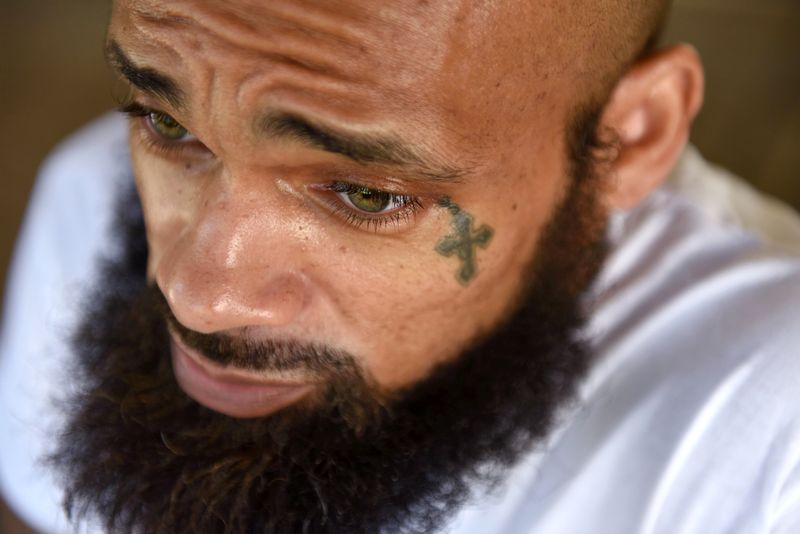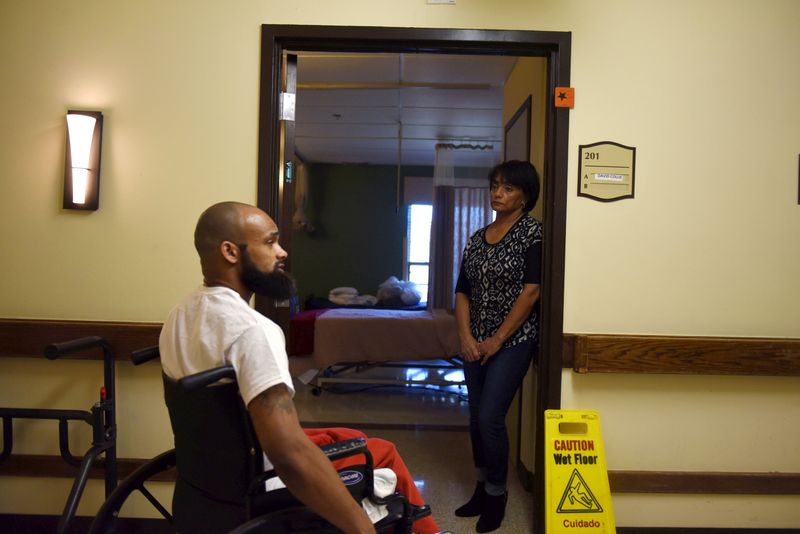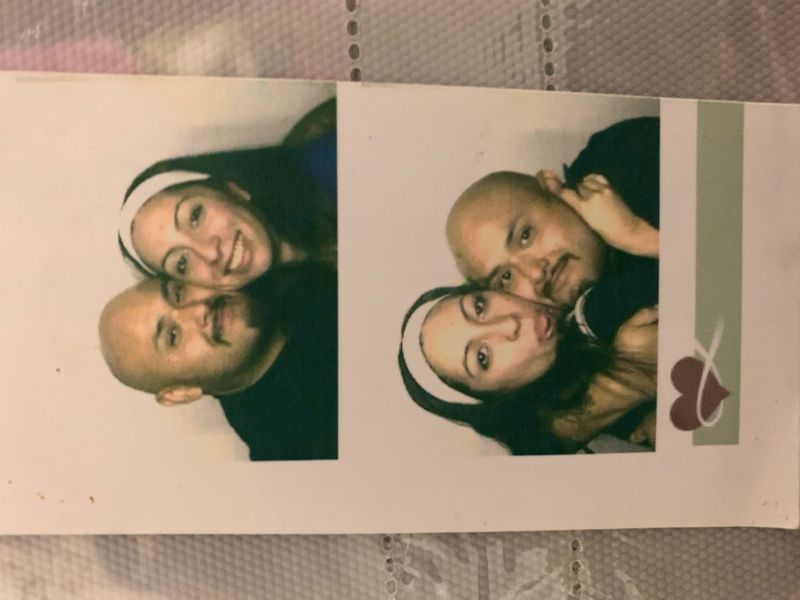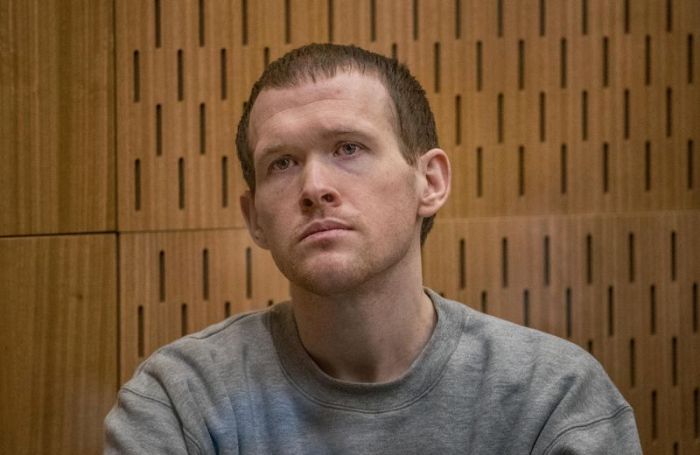FORT WORTH, Texas (Reuters) – When David Collie slipped off his shirt as he set out one sultry night to visit some friends, he didn’t know he was putting himself in grave danger. But he was. He now fit the description: shirtless, Black, male.
Moments later, Collie lay face down on the pavement, gunned down as a possible suspect in a crime he didn’t commit.
The shooter was Fort Worth, Texas, police officer Hugo Barron. He and his partner had been looking for two shirtless Black men wanted for an armed robbery involving tennis shoes. When the cops spotted David Collie, they pulled into the apartment complex, got out of the squad car and started shouting commands at him.
Police dashboard camera video shows that Collie was walking away from the two cops as he pulled his hand out of his pocket and raised his arm. That’s when Barron fired his gun. A hollow-point bullet slammed into Collie’s back, punctured a lung and severed his spine, leaving him paralyzed from the waist down.
In the four years since then, Collie, now 37 years old, has lived in nursing homes, afflicted with infections, pressure sores, and bouts of crushing depression. As he talked about the July 2016 shooting and what it took from him, wails from an elderly patient echoed down the corridor. The odors of urine and excrement wafted in from the hall. Collie closed his eyes and exhaled. “Paralyzed over some tennis shoes? Come on, man,” he said. “You’re playing with a human life here.”
To many Americans, the outlines of Collie’s encounter with police have become dismayingly familiar in recent years — and all the more so since the May 25 death of George Floyd, a Black man, under the knee of a Minneapolis cop sparked mass protests against racism and aggressive police tactics. The fate of Collie’s attempt at redress has become familiar, too, and now underpins demands that police be held accountable when they kill or seriously injure people.
In a lawsuit filed in federal court in Fort Worth, Collie accused Barron of excessive force, a civil rights violation under the Fourth Amendment to the U.S. Constitution. He thought that any money from a settlement or jury award would give him some measure of independence after the shooting cost him his job and derailed his plans to return to college. He also thought Barron should be held responsible for what he did.
Collie didn’t get very far. Barron, who hadn’t been disciplined or charged with any wrongdoing for the shooting, argued that he had acted reasonably on a fear that Collie was about to shoot his partner. Collie said he took his hand from his pocket to point to where he was going when Barron shot him. The judge sided with Barron — though Collie had nothing to do with the robbery the cops were investigating, had no gun on him, and was 30 feet away with his back to Barron when the cop fired.
The judge ruled that Barron was entitled to qualified immunity, a legal doctrine meant to protect police and other government officials from frivolous lawsuits. A federal appeals court, saying the case “exemplifies an individual’s being in the wrong place at the wrong time,” upheld the lower court’s decision.
“You shoot me, paralyze me, put me in a nursing home, ruin everything, and I can’t get no type of compensation?” Collie said. He leaned back in his bed. “This ain’t justice.”
Collie would have stood a much better chance of getting the justice he sought if he had been able to sue elsewhere. That’s because, in excessive force lawsuits, courts in some parts of the United States are more likely to deny cops immunity than others.
In a review of 529 cases since 2005, Reuters found significant differences in how the federal appeals courts treat qualified immunity.
Plaintiffs fared worst in the court that heard Collie’s appeal, the 5th U.S. Circuit Court of Appeals, where judges habitually follow precedents that favor police. The court granted 64% of police requests for immunity in excessive force cases.
By contrast, the 9th Circuit has set a higher bar for police. The appellate judges there granted immunity in just 42% of police requests for immunity in excessive force cases.
The regional disparities are also evident in federal district courts, where excessive force lawsuits are actually heard and which must follow precedents set by their respective appellate courts. In an analysis of 435 federal district court rulings in excessive force cases from 2014 to 2018 in California and Texas, the two most populous states, judges in Texas granted immunity to police at nearly twice the rate of California judges — 59% of cases, compared to 34%.
A plaintiff’s chances are so much better in California that one who was armed in an encounter with police is more likely to overcome qualified immunity than one who was unarmed in Texas.
TARGET OF OUTRAGE
For years, the words “qualified immunity” were seldom heard outside of legal and academic circles, where critics have long contended that the doctrine is unjust. But outrage over the killing of George Floyd and incidents like it have made this 50-year-old legal doctrine — created by the U.S. Supreme Court itself — a target of broad public demands for comprehensive reform to rein in police behavior.
The criticism that qualified immunity denies justice to victims of police brutality is well-founded. As Reuters reported just two weeks before Floyd’s death, the immunity defense has been making it easier for cops to kill or injure civilians with impunity. Based on federal appellate court records, the report showed, courts have been granting cops immunity at increasing rates in recent years — even when judges found the behavior so egregious that it violated a plaintiff’s civil rights — thanks largely to continual Supreme Court guidance that has favored police.
The regional differences Reuters has found in how qualified immunity is granted only add to arguments that the doctrine is unfair. “It’s essential to our system of government that access to justice should be the same in Dallas and Houston as in Phoenix and Las Vegas,” said Paul Hughes, a prominent civil rights attorney who frequently argues before the U.S. Supreme Court. “It shouldn’t turn on the happenstance of geography as to whether or not they (plaintiffs) have a remedy.”
The “happenstance of geography” shows up in a comparison of Collie’s case to the one Benny Herrera’s family filed after a cop killed him in 2011. Police in Tustin, California, were looking for the 31-year-old father of four after a former girlfriend reported that he had assaulted her. They found him walking along a lightly trafficked road, behaving erratically. As in Collie’s case, a cop opened fire when he thought Herrera was about to shoot him. Like Collie, Herrera did not have a gun.
In the Herrera family’s lawsuit, the cop was denied immunity. The district court judge, and the 9th Circuit Court of Appeals after him, weighed the same question as the courts in Collie’s case: Did the shooter act reasonably on a fear for his and others’ safety when he used deadly force? In this instance, the court said no. The case could move forward.
Before the family’s lawsuit got to trial, the plaintiffs secured a $1.4 million settlement. Herrera always wanted his children to be financially secure, Elizabeth Landeros, mother of one of his children, said. They lost their father, she said, but at least “now they’ll be OK.”
PHILOSOPHICAL DIFFERENCES
Qualified immunity plays out differently from region to region because of differences in judicial philosophies among those regions, lawyers and legal experts said.
Over the years, the Supreme Court has repeatedly told lower courts to use an objective analysis when weighing police claims of immunity: They must determine whether the force used was reasonable or excessive, and if the latter, whether the specific type of force used has already been defined as illegal under “clearly established” precedent.
But how judges answer those questions is influenced by their personal views on police authority and individuals’ rights, and their views often reflect the cultural and political landscapes they inhabit. In typically conservative areas, judges tend to favor police, while in more liberal parts of the country, they tend to favor plaintiffs. Those tendencies get baked into circuit court precedents that all judges in that circuit must follow.
Most judges are from the area where they serve and grew up in that culture, and “whether they are liberal or conservative, they are bound to apply the law as it’s developed in that circuit,” said Karen Blum, a professor at Suffolk University Law School in Boston and a critic of qualified immunity. “Is it fair? No.”
The liberal-leaning 9th Circuit, where the Herrera family sued, has established in its precedents powerful support for plaintiffs. Among them are rulings cautioning against throwing out excessive force cases before a jury has had a chance to weigh an officer’s credibility, and requiring more than officers’ claims that they feared for their safety as grounds for granting immunity.
The Supreme Court has repeatedly rebuked the 9th Circuit for its willingness to deny cops immunity, and especially for applying, as the high court wrote in a 2011 ruling, “a high level of generality” when analyzing the question of clearly established precedent.
PERCEIVED THREATS
Judges in the 5th Circuit, where Collie’s case was heard, are more likely to prioritize police power over citizens’ rights and liberties. Courts in the 5th Circuit habitually cite precedents that favor police by treating an officer’s perception of a threat as the key consideration. They do the same when deciding whether the force used was illegal under clearly established precedent, requiring that the material facts of the two cases be nearly identical.
“If you approach these cases by placing a thumb on the scale in favor of police officers, you will tend to search the record for any basis in which to conclude that the actions police officers ultimately took were justified,” said Hughes, the civil rights lawyer.
Across the country, different judicial approaches result in different outcomes for similar cases — including numerous cases like Collie’s, in which cops claimed they were countering a threat to themselves or others when they shot someone from behind.
In Indio, California, a cop was denied immunity after fatally shooting Ernest Foster Jr three times in the back during a foot chase at a shopping plaza, even though police recovered a gun from the scene. And in Denver, Colorado, an officer was denied immunity after shooting Michael Valdez in the back, severely injuring him, though the cop himself had been shot during the preceding car chase.
These cases were in the 9th and 10th Circuits, respectively, both relatively plaintiff-friendly, based on the Reuters analysis of how often they granted qualified immunity.
But in Houston, a cop was granted immunity after fatally shooting Gerrit Perkins in the back while Perkins crouched in a closet holding a cordless phone. Perkins was unarmed. And in Bradley County, Arkansas, an officer was granted immunity after shooting Davdrin Goffin in the back, partially paralyzing him, even though he had already been patted down for weapons. He, too, was unarmed.
These cases were in the more police-friendly 5th and 8th Circuits, respectively, based on how often they granted qualified immunity.
Minnesota, where George Floyd lived, is also in the 8th Circuit. The day state investigators arrested the Minneapolis officer who knelt on Floyd’s neck as he died, the appellate court granted immunity to cops in Burnsville, Minnesota, who killed Map Kong, a man in a mental health crisis, when they shot him in the back as he ran away holding a knife.
ESSENTIAL TO POLICING
Police officers and their supporters say qualified immunity is essential to ensure that police can make split-second decisions in dangerous situations without having to worry about being sued later. “If we expose police officers to these suits on a regular basis, who would ever want to be a police officer?” said Kent Scheidegger, a lawyer with the pro-law enforcement Criminal Justice Legal Foundation, based in Sacramento, California.
However, denial of immunity doesn’t necessarily mean a certain loss for police. It means only that a lawsuit can move toward a jury trial or a financial settlement. District court data show that when cops were denied immunity in California and Texas, the cases were settled at about the same rate, 64% of the time. In nearly all of the remaining cases, a jury decided in favor of the police.
Even when a plaintiff secures recompense through a settlement or a jury award, the cops are nearly always indemnified against personal liability, meaning local governments — typically named as defendants — or their insurers cover the costs.
This widespread practice, legal experts said, undermines the ability of lawsuits to deter excessive force, particularly since cops are rarely prosecuted or otherwise disciplined for their actions. “There is no sense of justice being done,” said Blum, the Suffolk University law professor. “The goal should be to deter, in some way to have a price paid if you engage in this kind of behavior.”
Blum is part of a broad coalition of lawyers, scholars, civil rights groups and politicians who in recent years have called for qualified immunity to be reined in. As currently applied, they say, the doctrine too often denies even an attempt at justice to people who believe they are victims of excessive force and fails to hold police accountable.
An increasing number of judges of all stripes have also expressed frustration with the doctrine and the Supreme Court’s repeated interventions that have made it harder to deny immunity. In an opinion last year, Judge Don Willett, appointed to the 5th Circuit by President Donald Trump, put it bluntly: “The real-world functioning of modern immunity practice — essentially ‘heads government wins, tails plaintiff loses’ — leaves many victims violated but not vindicated.”
The justices have offered few explanations for their stance on qualified immunity beyond writing in opinions that the doctrine is important “to society as a whole” and balances individuals’ rights with the need to curb litigation that could unduly burden government officials. Two of the justices — liberal Sonia Sotomayor and conservative Clarence Thomas — have criticized qualified immunity in written opinions in recent years. All nine current justices declined to be interviewed for this article.
Amid the protests in the wake of Floyd’s death, expectations ran high that the Supreme Court would finally move to restrict or end qualified immunity by taking up at least one of several petitions to hear cases backed by opponents of the doctrine. But in early June, it rejected those petitions.
Congress moved swiftly to draft police reform measures, but legislative proposals, including some that would have ended qualified immunity, stalled as Democrats and Republicans deadlocked over issues of addressing racial inequality and police accountability. President Donald Trump’s White House and some Republicans in Congress have called eliminating qualified immunity for police a “non-starter” on the grounds that it would deter police officers from doing their jobs properly.
A NEW BEGINNING
In the summer of 2016, David Collie was putting his life in order and putting a troubled past behind him.
More than a decade earlier, as a student at Texas Southern University in Houston, he had become involved in a gang, indulging in “glamor, clothes, money and girls,” he said. When he pulled a gun on an adversary and took his car for a ride, Collie was charged with robbery and evading arrest and spent 11 years in prison.
Two months before Barron shot him, Collie had landed a full-time gig building supermarket produce displays. He liked the work, and he was cheered to be saving money before resuming college classes in cinematography in the fall. “Work and school, that was always the plan,” he said.
On the night of July 27, he got a call. Some friends who lived in the same apartment complex were arguing. It was late, and he had to be at work at 7 a.m., but he decided to walk over to the couple’s home to try to calm them and provide a diversion for their children, who called him Uncle David.
Officer Barron of the Fort Worth police and Tarrant County Deputy Sheriff Vanesa Flores were working off-duty paid security detail for a nearby apartment complex that night. They had just heard from dispatch that two shirtless Black men had made off with two pairs of tennis shoes, valued at $225 each, in a deal organized through Facebook. One of the suspects, the officers heard, had brandished a gun.
Just after midnight, police dashboard camera video shows, the two officers were walking toward Collie when Flores trains her flashlight on him. Barron pulls out his pistol. Collie turns around briefly and then continues to walk away.
Collie said the pair were shouting commands at him and over each other. He was confused, unsure about what to do, he said. “They asked me where I was going, I was pointing,” he said. “I was trying to comply.”
The instant Collie pulled his right hand out of his pocket to point, Barron fired. “You didn’t have to shoot me,” Collie recalled saying after the force of the bullet slammed him to the pavement.
Time elapsed from the cops first appearing on the dash-cam to the shooting: five seconds.
The Fort Worth Police Department declined to comment and declined to make Barron available for comment. Flores, who no longer works for the Tarrant County Sheriff’s Office, could not be reached.
After the Fort Worth police internal affairs division investigated the shooting, the Tarrant County Criminal District Attorney’s Office presented the evidence to a grand jury, which declined to indict Barron on any criminal charges. A spokeswoman for the office noted that Flores “did not cause, participate in, or contribute to the shooting,” and had no further comment.
SHACKLED IN RECOVERY
Collie endured a difficult two-month recovery in hospital. In addition to his paralysis and other medical issues that linger to this day, he was diagnosed with post-traumatic stress disorder. Doctors removed a bullet fragment from his chest seven weeks after the shooting.
He was also shackled to his hospital bed for nearly the entire time because police had charged him with aggravated assault on a public servant. A grand jury eventually declined to indict him.
In March 2017, Collie filed his lawsuit in federal district court in Fort Worth, naming Barron, Flores, the City of Fort Worth, Tarrant County, and several other officers as defendants. Any money Collie got would allow him to afford a home and a car modified for his disability. He also hoped to pay for physical therapy to try to walk again, though doctors said that was a long shot. “It’s like the world is saying, ‘I’m sorry, we’re wrong we did that…We’re going to help you out, help you get back on your feet,’ ” Collie said of the recompense he sought.
Less than a month after Collie sued, lawyers for Barron, provided and paid for by Fort Worth, requested qualified immunity for the cop. Early on, Judge John McBryde dismissed Collie’s claims against all defendants other than Barron and Fort Worth.
In court papers, Barron’s lawyers said the cop had acted reasonably because he believed Collie had a handgun and was moving to take aim at Flores. Flores had also told investigators that night that she thought she saw something in Collie’s hand. “In using reasonable force to stop an apparent deadly threat, Officer Barron violated none of Plaintiff’s constitutional or other rights and is entitled to qualified immunity,” Barron’s lawyers argued.
Collie had no gun. A boxcutter was found in the grass near where Collie went down, according to the police report. Collie said he always carried a boxcutter with him because it was necessary for his job. He adamantly denied that he was holding the boxcutter when he raised his hand to point. He said he believes Barron cited it as an excuse to cover up a mistake.
Barron’s request for immunity asserted that whether Collie was armed or not was irrelevant. “Merely arguing that in the end it must somehow be unreasonable to shoot an unarmed suspect is not enough” to let a lawsuit go forward, the request said.
Collie’s lawyers countered that Barron “created a threat in his mind that did not exist.” A forensic expert they hired to map the scene, capture images using a drone and analyze the dash-cam footage concluded that Collie was not holding an object, let alone pointing it at Flores, when he was shot.
EXCESSIVE AND UNREASONABLE?
In July 2017, McBryde granted Barron’s request for immunity. In his decision, he relied on a stringent 5th Circuit standard for finding that excessive force was used: not only that the plaintiff’s injury resulted from force that was “clearly excessive,” but also that the excessive force was “clearly unreasonable.”
As a Texas judge, McBryde supported his ruling that shooting Collie was reasonable by drawing on 5th Circuit precedents that elevate an officer’s perception of a threat as the key consideration in weighing an immunity claim. He cited a 2003 precedent that force is presumed to be reasonable when police perceive a threat, even if alternative courses of action were available.
Even if Collie had nothing in his hand and did not point at Flores, he had no right to a trial, McBryde said in his ruling, “because the test is whether Barron acted reasonably in light of what he perceived.”
McBryde declined to comment.
Collie fared no better with his appeal to the 5th Circuit. Noting that Collie “fit the description of one of the suspects,” the appeals court in 2018 agreed that Barron’s perception that night mattered most.
The appeals court cited its own precedents. One was a 2008 ruling, Ramirez v. Knoulton, which said that cops do not have to wait to act against a threat and that “courts should not second guess the timing of that realization.” Another was a 2016 ruling that singled out a Houston cop’s perception of an immediate threat as the most important consideration in granting immunity. In that case, the cop claimed he shot Ricardo Salazar-Limon in the back, paralyzing him, after Salazar reached for his waistband. Salazar was unarmed.
A spokesman for the 5th Circuit declined to comment for this article.
Manny Ramirez, president of the Fort Worth Police Officers Association, said the courts made the right decision to throw out Collie’s suit. Barron is “a good officer,” Ramirez added. “His work product speaks for itself.” The legal system, he said, must recognize the dangers officers face on the job.
Barron was moved to a special tactical unit of the Fort Worth police in 2018.
Plaintiffs and civil rights activists said the 5th Circuit is providing an easy out for cops who use excessive force because it is particularly receptive to the argument that they perceived a lethal threat.
Daniel Harawa, a lawyer affiliated with the NAACP Legal Defense and Educational Fund, called this defense “How to get out of a civil lawsuit 101.” He said he fears that as this line of defense succeeds, “we almost incentivize police officers to reflexively say, ‘I saw him reaching, I saw an object.’ ”
MEANWHILE, IN CALIFORNIA
The cop who shot and killed Benny Herrera used the same defense as Barron. But that was in California, not Texas.
On the morning of Dec. 17, 2011, Herrera was visiting his former girlfriend, Hilda Ramirez. He spent time playing with her children and making them breakfast. Over the meal, Ramirez later told detectives, Herrera said he had a feeling something big was going to happen that day.
Around 2 p.m., he left for home. He returned just 15 minutes later, his demeanor changed — paranoid, pacing back and forth, his eyes glossy. Ramirez recognized the signs: Herrera battled substance abuse for much of his life. He had been in and out of prison, too, for armed robbery, drug possession and parole violations. Court records show that in two instances, girlfriends had called the cops because they feared for their safety after Herrera became agitated.
When Herrera saw Ramirez texting her new boyfriend, he punched her in the head, grabbed her cellphone and left. Ramirez called 911 to report what had happened. She told the operator that Herrera had not used a weapon and did not carry one. A dispatcher relayed to the responding officers that Herrera was not known to carry weapons.
Minutes later, Tustin police officers Brian Miali and Osvaldo Villarreal — in separate vehicles — found Herrera walking along El Camino Real where it runs alongside Interstate 5. A cigarette dangled from Herrera’s lips. It was a cold and cloudy afternoon, and he kept his right hand in the pocket of his black hoodie.
Dashboard camera video from the scene shows Herrera running away and then turning around and skipping backward as he veers into the middle of the street. The officers close in, trying to hem in Herrera between the two vehicles. Each cop drew his gun.
“Get your hand out of your pocket!” Villarreal shouted as his vehicle approached Herrera, who at that instant wheeled around toward Villarreal with his right arm flailing. Almost immediately, Villarreal fired his gun through the car’s open passenger side window.
Villarreal told investigators that he felt “trapped” when Herrera turned toward him and that he believed Herrera was armed and would shoot him. When Herrera “charged at me” and started to pull his hand out of his pocket, Villarreal told investigators, “I knew he had the drop on me, and as I came up, I fired twice.”
But Herrera was unarmed. A pack of cigarettes, a syringe, and several coins were recovered near his body. Toxicology tests found methamphetamine and tranquilizers in his blood.
After investigating the incident, the Orange County District Attorney’s Office concluded in a January 2013 report that Villarreal’s use of deadly force was reasonable because he thought Herrera was armed. It recommended no criminal charges.
Herrera’s family filed an excessive force lawsuit in federal district court in Santa Ana against Villarreal and the City of Tustin.
Villarreal quickly requested qualified immunity. Judge Josephine Staton denied the request. She cited a 9th Circuit ruling, Deorle v. Rutherford, that sets a higher bar for cops than the 5th Circuit precedents cited in Collie’s case. It says that “a simple statement by an officer that he fears for his safety or the safety of others is not enough; there must be objective factors to justify such a concern.”
Staton declined to comment.
Villarreal appealed, but in 2016, the 9th Circuit upheld the lower court’s decision. It cited the Deorle precedent and others to conclude that Herrera was not an immediate threat to the officers. Herrera did not try to flee, and Villarreal gave him no time to act upon the order to take his hand out of his pocket before shooting, the appeals court said.
The ruling also cited precedents that clarified when deadly force is justified, including one from 2005 that said a suspect’s involvement in a domestic incident does not necessarily make him an immediate threat to an officer.
A spokeswoman for the 9th Circuit declined to comment for this article.
The appellate court’s decision meant the excessive force claim could proceed. Soon, the plaintiffs faced a choice: continue to trial or accept a settlement with the city.
Elizabeth Landeros, a former girlfriend of Herrera and mother of one of his children, said she felt Villarreal should be held responsible for leaving her child without a father. But the family’s lawyers were wary that the jury would be persuaded by the defense’s arguments that Herrera was a dangerous man with a criminal history and a drug problem. The family ultimately agreed to accept a $1.4 million settlement, split among Herrera’s parents and his four children.
A spokesman for Tustin police said, “The litigation ended to the satisfaction of all parties,” and declined to comment further. Villarreal retired from the department and could not be reached.
‘LET’S BE HONEST’
Without the recompense he sought in his lawsuit, David Collie gets by on Social Security disability benefits and Medicaid. In early June, he moved to an assisted living facility. He still shares a bathroom, but now has his own living space. His mother, Pamela McCloud, whose house doesn’t have wheelchair access, got training as a home health aide so that if her son is ever able to move into his own place, she can care for him.
Collie has closely followed media coverage of the protests sparked by George Floyd’s death and the ensuing debate about police reform. “The part I like about it, as a Black man that experienced it and sees what’s going on, is now you have white people and people from different nationalities saying, ‘Yeah, let’s be honest about it.’ ”
About his own situation, he said that without his Christian faith, “I probably wouldn’t even want to be alive.” His faith has allowed him to forgive Barron, he said, “but he was wrong.”
Collie said he thinks “bad apples” may taint many police departments with racism and excessive force across the country, but in the main, he defends cops, including the Fort Worth police. “It’s an honorable profession,” he said.
(Reporting by Andrew Chung in Fort Worth, Texas; Lawrence Hurley in Washington, D.C.; Andrea Januta in New York; and Jackie Botts and Jaimi Dowdell in Los Angeles. Edited by John Blanton and Janet Roberts.)

